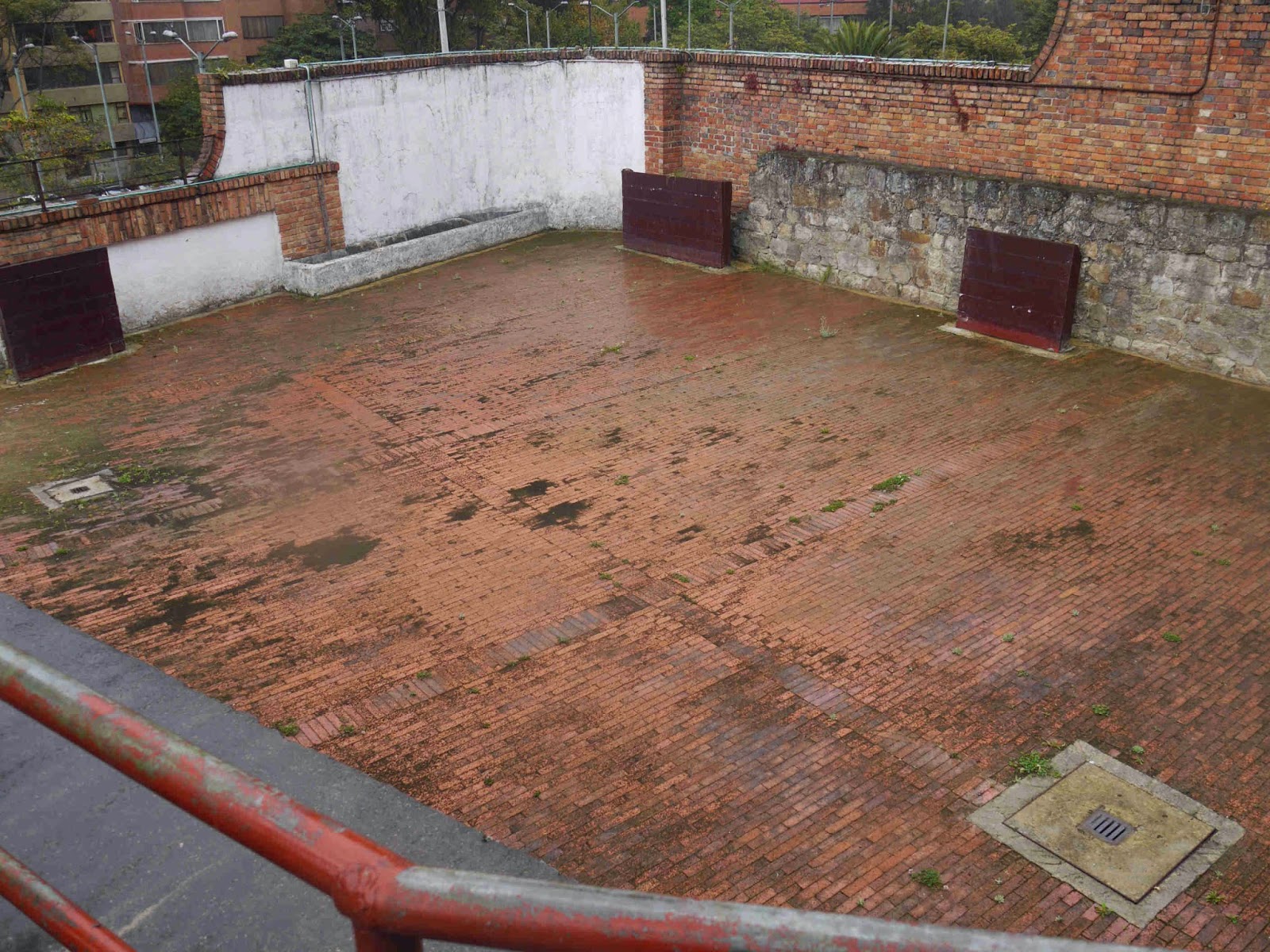 |
| Andrés Castillo stands in front of the bullfighters' protest stand. |
 |
| Hunger strikers. 'We don't want food. We're hungry for bulls.' |
"My greatest dream is to fight in Bogotá," he says.
 |
| Hunger strikes several days ago. |
"I dream about bulls; I live with bulls; for me, bulls are everything," he says.
 |
| An empty corral: Destined for cars? |
But Castillo caught the bug, despite suffering a mild goring from a calf in his first fight in 2012. He blames that, the first of many such gorings, on the fact that he'd trained for only two days.
"I got back up and kept going," he remembers proudly.
 |
| Andrés on Aug. 19 with his mother, Lorena. The night before, he had been hospitalized and given serum. 'He's in the hands of God,' Lorena said. |
Bullfighting is undeniably in decline, both because of pressure from animal welfare advocates and because the futbol. Colombia is the world's third most important country for bullfighting, after Spain and Mexico. Except for Bogotá, all of Colombia's major cities and many small towns have bullfights. There is also some bullfighting in Peru, Ecuador and Venezuela.
The bullfighting crowd also seems to be aging out. Young people in Colombia and other countries are into
His profession's decline worries Castillo, but doesn't dissuade him.
"When I think about bullfighting, I think of victory, not defeat," he says. "I don't know whether I'll achieve it, but I'm going to give all I can. There's nothing else that I like."
Transforming the Bogotá's Plaza de Toros into a Plaza de Todos (Plaza for Everybody) was one of Petro's headline promises during his mayoral campaign. For the first year or so of his mayoralty the handsome moorish-style stadium was used for cultural events and concerts. However, for the last 12 months the building has sat vacant, except for tourist visits and toreros practicing in the morning. The mayor's planned remodeling could be the death knell for bullfighting in the arena if the building's stables are transformed into a parking area.
Colombian bullfighters see the Santamaria Plaza as fundamental to their career prospects because it's where they have their best chance of being recognized and offered contracts to fight overseas.
 |
| Protesting bullfighters display their craft. |
The bullfighters have filed lawsuits demanding the return of bullfighting. They are backed by laws declaring bullfighting part of the city's patrimony. According to El Tiempo a court is likely to rule in the bullfighters' favor. But they can expect Petro to oppose bullfighting's return with every resource he has. After all, stopping the fiesta brava is about the only transformation the ex-revolutionary has accomplished. More than two years into his term the city is as polluted and congested as ever, and trash still piles up on streetcorners.
 |
| Slaughtered pigs and cows for sale in Paloquemao Market. Does anybody care how these animals lived and died? |
In his eight days of fasting, Castillo's weight has lost ten of his 64 kilos. But he says he has no doubts about continuing on until the plaza is reopened for bullfighting.
"I've risked my life with bulls," he says. "So, why not here, to defend 83 years of tradition."
By Mike Ceaser, of Bogotá Bike Tours





No comments:
Post a Comment